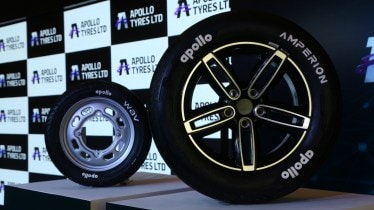A few weeks ago, there were reports being published stating that electric vehicle tyres were found to be more polluting than conventional fossil-fuel run vehicles. This could translate to a conflicting paradox for EV owners. But what exactly is the reality? Experts say that there isn’t still adequate data to justify such claims.
In fact, before one gets further into the debate, it is very important to note, when one looks at on-road vehicle emissions, almost 95 percent of the emissions comes from tailpipe, while around 5 percent is from other sources – brake, tyre, rust, etc.
Financial Express Online, reached out to industry experts to try and assess their views on the topic of EV tyres being more polluting.
Amit Bhatt, India MD, International Council of Clean Transportation (ICCT) stated “These social media reports lack peer-reviewed research support and merely assume that EVs, due to their higher weight, generate more tyre emissions. Yet, this logic overlooks the fact that heavier vehicles like SUVs and sedans should logically emit more pollutants, which the report fails to address. Therefore, it’s essential to await peer-reviewed research to substantiate these claims as they currently seem more like opinions than factual findings.”
Daniele Lorenzetti, Chief Technology Officer, Apollo Tyres too had a similar opinion, he said theoretically “higher weight and instant torque of EVs mean that there is a likelihood of higher wear rate for tyres, having said that, the new generation EVs are now developed with higher levels of control systems to minimise the tyre wear and tear.”
In fact, as per a report titled ‘Non-Exhaust Emissions from Road Traffic’ available on UK AIR Information Resource, prepared by experts for the Department for Environment, Food and Rural Affairs; Scottish Government; Welsh Government; and Department of the Environment in Northern Ireland states that “Brake pads are of highly variable composition, and there are differences, but of smaller magnitude, in brake discs and tyre rubber compound. Road surface materials vary widely in composition and texture, as well as in their state of repair. Consequently, even when subject to the same external forces, different brakes or road surfaces will generate particles with variable efficiency leading to differences in emission factors which are hard to capture in detail as it is not feasible to test across the whole range of properties of the materials.”
Coming to the concerns that electric vehicle tyres are more polluting than their IC-counterpart. The Non-Exhaust Emissions from Road Traffic report explained that “Further uncertainties relate to electric vehicles. Battery electric vehicles can use either regenerative braking or conventional friction brakes. Regenerative braking involves cutting power to the electric motor which then continues to rotate due to the inertia of the vehicle and acts as a generator recharging the batteries. In doing so, it is subject to a substantial reverse force which slows the vehicle. Unlike the friction brakes, this does not lead to significant generation of particles, but the ratio of regenerative to friction braking will depend upon driving style and road conditions and is hence difficult to predict.”
Bhatt explained that the majority of non-exhaust vehicle emissions, such as brake wear, tyre wear, road wear and resuspension particles, occur irrespective of the vehicle type or its powertrain. “Moreover, exhaust emissions from IC-engine far outweigh non-exhaust emissions. Real-world exhaust emissions also exceed laboratory values significantly. Hence, when compared to overall exhaust emissions from ICE vehicles, non-exhaust emissions are relatively minor.”
IC-vehicle Vs EV tyres
When it comes to the evolution of tyres, for the average consumer, they continue to be seen as a black piece of rubber with different groove patterns. But in fact, there is a lot that goes behind the science of tyres than meets the eye.
Talking about designing a tyre Lorenzetti states that both IC-vehicles and EVs brings enhanced level of specific performance challenges:
a) In-cabin noise level becomes even more important, and perceived at higher level due to the absence of engine noise in EVs.
b) Similar to ICE, EV vehicle needs energy efficient tyres.
c) Instant high torque level of EV, demands improved wear resistance in tyres.
d) EV vehicles, depending on configuration, brings additional weight challenge, thereby demanding enhanced tyre durability.
“Keeping above facts into consideration, EV vehicles demand same set of performances, as ICE vehicles, albeit at enhanced levels,” said Lorenzetti.
According to Bhatt “Many modern vehicles come equipped with low rolling resistance tyres, which enhance mileage and reduce energy consumption. While EVs typically feature such tyres, the primary distinction between EV and ICE vehicle tyres, in cases where the same model exists in both variants, lies in their size, with EVs typically having slightly larger tyres.”
Apollo Tyres stated that with the focus on sustainable mobility the tyre Industry is continuously working towards increasing the wear life of tyres. Enhancement of tyre life is achieved by using higher wear resistant compounds combined with optimised footprint design.
Going forward Bhatt added that “Direct electrification stands out as the most effective strategy for reducing energy consumption and, consequently, carbon emissions. Electrifying transport offers deep decarbonisation potential, making rapid electrification indispensable in curbing carbon emissions. Additionally, to mitigate the impact of non-exhaust emissions, it’s crucial to establish limits for particulate emissions from brakes and tyres, a step already underway in Europe with the development of Euro VII standards.”
